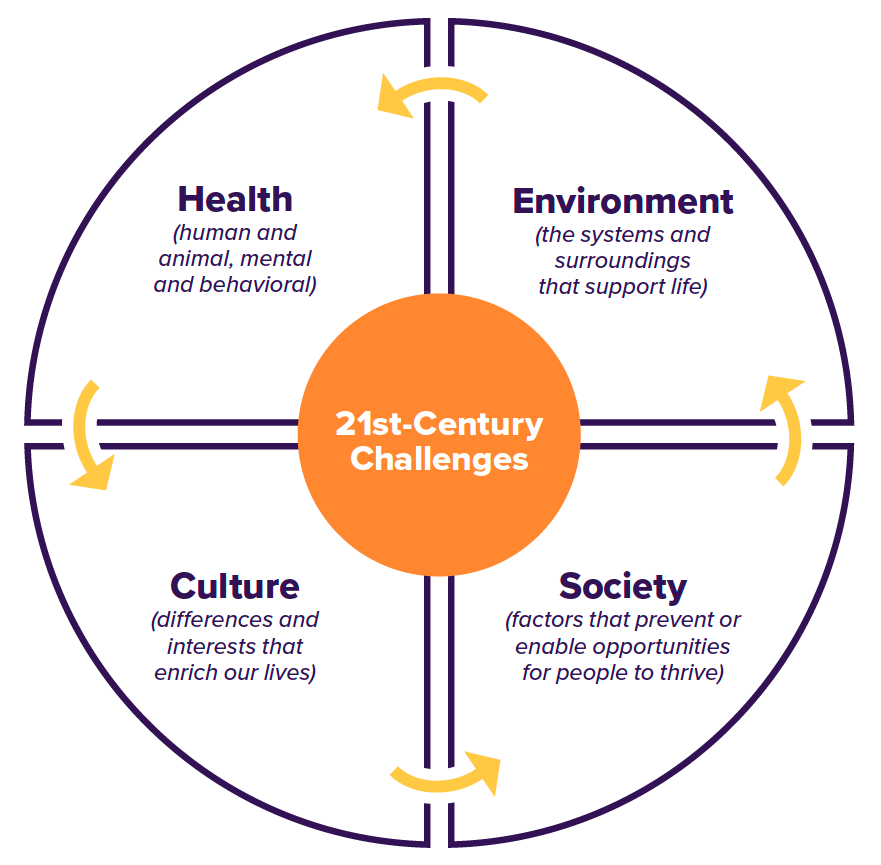Positioning and Messaging
The positioning statement articulates the conceptual core of our brand and serves as the underpinning for everything we say and do. Working from this fundamental statement, the many areas of the UC Davis enterprise can move forward in their own unique ways, having started from the same place. Our brand essence distills the positioning statement into a succinct, memorable phrase. This is not meant to be a tagline, a slogan or a headline, but rather an internal expression that should be used as a recall device — a mental prompt for starting a conversation. It serves as a gut-check for the decisions we make and the spirit of everything we create.
Positioning Statement
The UC Davis community confronts life’s most urgent challenges and unjust conditions by rallying a team of world-class experts to protect and nourish the lives of Californians and the world.
Brand Essence
Growing for the Global Good
Message 
At UC Davis, we know that the complex and multifaceted challenges of the 21st century will not be solved by one discipline or solution alone. They’ll require the coming together of many areas, all working with a shared vision of a better tomorrow. This is what we do best at UC Davis, and we’re applying our strengths in full force to address the issues that affect the quality of life for all.
Health
Human and animal, mental and behavioral health.
Environment
The systems and surroundings that support the environment.
Culture
Differences and interests that enrich our lives.
Society
Factors that prevent or enable opportunities for people to thrive.
Audiences
A university of our size serves a complex array of audiences, which we’ve grouped into four high-level segments below. We should consider the needs of each community when we plan our marketing and communication efforts.
Internal audience
Including but not limited to administration, faculty, researchers, clinical staff, academic staff, current students and alumni.
Goal
Move forward with confidence and optimism, focusing on the many positive things happening within the UC Davis family.
Recruitment
Including but not limited to prospective students, influencers, high school counselors, community college advisors, professionals, patients, physicians and nurses.
Goal
UC Davis is strongly positioned. Adopt a long-term focus on steadily increasing the quality of student.
Fundraising
Including but not limited to alumni, donors, funding partners, grateful patients, grateful clients, campaign volunteers
Goal
Work to re-engage distant alumni and then convert pride to action by taking a more visible stance for the tremendous impact UC Davis makes.
Reputation building
Including but not limited to peers and competitors, the general public, referring physicians, faculty networks, government and industry partners.
Goal
Invest heavily in boosting the university’s national reputation beyond specific areas of strength, like agriculture and veterinary medicine.
